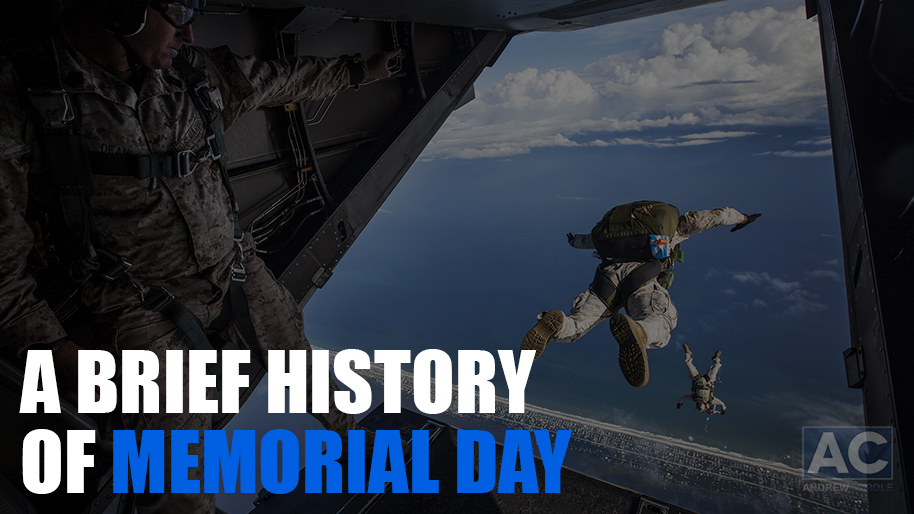Miracle in the Andes
August 10, 2015

Does the name Nando Parrado mean anything to you? If you relish raw, visceral survival stories it should. And if it doesn’t now, you soon won’t forget him. Nando details the gut-wrenching story of his survival following a plane crash in the Andes mountains in his book, “Miracle in the Andes: 72 days on the Mountain and My Long Trek Home.”
On Friday the 13th of October, 1972, Nando was one of the 45 souls who boarded the chartered Fairchild turboprop, Uruguayan Air Force flight 571. Nando was a member of the Old Christians Club rugby team on their way to a match. Along with the team were several of the teams’ family members and friends.
The flight was in poor weather. The pilots did not factor in the heavy headwinds when they guesstimated their position incorrectly. They turned the plane into the face of an unnamed mountain peak. Later on it was named Cerro Seler, or Glacier of Tears. The plane clipped the peak at 13,800 feet, shearing off both wings. The tubular fuselage slid down a steep slope before coming to rest in a snow bank. When the wings came off, they were viciously twisted backwards so that the spinning propellers sliced through the fuselage. Additionally the tail section broke off. Of the 45 souls on board, 12 were killed immediately. Another 5 died by the next morning and 1 more died on the 8th day.
The 27 remaining faced 35-below wind chill temperatures. There was no food but the few chips and candy bars and bottles of wine they scrounged from the luggage. They had no cold-weather clothing and many of the 27 had severe injuries. 22-year old Nando himself was in a coma for 3 days and was assumed dead by his companions. Nando’s mother and 17-year old sister perished in the flight as well. To add further terror and insult to the survivors, an avalanche on day 16 claimed 8 more lives.
There were two pivotal moments however that decided the ultimate fate of the 16 eventual survivors of the air disaster. First, on day 9 the survivors held a 2-hour meeting to discuss what they would do for food. There was only one obvious choice, since the mountain was frozen and afforded no trees, shrubs or animals of any kind. The decision was agreed upon to cannibalize the frozen bodies of their fellow travelers now deceased. They concluded the meeting by agreeing that if any of them died, they granted permission to the living to use their corpses for food. Their argument played on the idea that eating the flesh of the dead was not dissimilar to receiving an organ transplant from a deceased person.
Secondly, the huddled group had a small transistor radio they found in the luggage. On day 11 they discovered that the search for their wreckage and any survivors was called off. Many broke into sobs and prayers. Nando tells of Gustavo Nicolich saying, “Hey boys, there’s some good news on the radio. They’ve called off the search.” Another shouted angrily, “Why is that good news?” Nicolich responded, “Because it means that we’re gonna get out of here on our own.” Nicolich’s courage prevented a flood of total despair.
For 49 more days, the weakened survivors learned how to improvise with parts of the wreckage to collect and melt snow for water, to use the seat cushioning for insulation and to even make sleeping bags. But eventually, they came to understand that someone would have to leave the grisly security of their “home”. They’d have to venture into the wild peaks to try to find help. Commenting later on these moments, Nando said, “Everybody speaks about all those issues of team work, facing crisis, decisions under stress, creativity, innovation, etc.”
“I firmly believe this, there comes a time for individuality. You have to be an individual, we worked together, we loved each other very much. But there came a time when I had to make a decision myself. I said, “Guys, I’m leaving.” There was no board meeting to decide who would be the best expedition leader. It didn’t happen that way. I was going to leave. If anybody wanted to come with me, great.”
On day 60 following the crash, Nando and two others left. Three days later, one turned back. Nando and his companion Roberto Canessa travelled over 70 miles in 10 days. Scaling peaks unnamed and unclimbed with no equipment. Their pockets and socks stuffed with frozen human flesh to give them sustenance. The 2 men climbed in street clothes to heights of 17,000 feet. Peaks that would challenge expert climbers with full gear. Nando said, “If we were going to die anyway, I wanted to die trying.” He spoke not of heroism but of a stubborn will to survive. Speaking of tackling the formidable peaks. He commented, “Our ignorance provided our only chance.” If they had known how difficult their trek would be or how unlikely it is for inexperienced and ill-equipped amateurs to scale mountains 15-17,000 feet tall, they would possibly have not even attempted to do so.
On December 18, Nando and Roberto heard the roar of rushing water. “This is the birth place of a river,” Nando said, “It will lead us out of here.” Two days later a shepherd on horse back saw them and the day after, they were rescued. On December 22, 2 rescue helicopters with Nando onboard to guide them. They flew to the crash site where the 14 other survivors were airlifted to safety.
Every survival story has not only the inspiration to help us mentally and emotionally in our tough predicaments, but also poignant features that highlight practical ideas we can assimilate into our own survival skills. Nando’s story deserves some serious contemplation. First, his story highlights the suddenness and the severity with which we can find ourselves trapped and fighting for survival. Nando said, “Most of us lived by the sea at home. We were never in mountains before, or touched snow. One minute we’re laughing and joking. Then we’re covered in blood and are freezing on the mountain at 11,000 feet with no clear way out.”
There’s a current television advertisement for a medication. It shows a woman happily enjoying lunch with her friends when she is handed a note. It reads, “Your heart attack is planned for today.” As shocking as such news in reality would be, the truth is that many of us would like to be fore-warned, for to be fore-warned is to be fore-armed. A fire, auto accident or theft can be covered by insurance to some degree; but, how about a bankruptcy, divorce, lawsuit, financial collapse, cancer, the resignation of a key employee or one’s own job loss?
All come with a suddenness that catches us mostly unaware and puts us in the vise of insecurity, terror and shock. And nearly always without a plan. After all, who flies with a plan for a crash in the mountains? Who starts a business with a plan for it to fail? Or who enters a marriage planning to divorce? Who brings a child into the world with plans for it to die or be born with birth defects? Who borrows money for one’s business with a bankruptcy plan drawn up? Not many.
It seems to the intelligent mind that to plan for such contingencies is almost a lack of good faith, revealing a bizarre bent for failure. It could seem to be a bad omen, entering the door of opportunity with a loser plan. Who wants to play on the team where the coach says, “I have a really good plan for after the game if we lose.”?
And yet, losing is a major part of the business world. Fifty percent of new businesses are out of business in 5 years and over 80% are done by year 10. Those numbers demand more action than one would expect from a coach in sports or on an airline where the accident rate is measured in the single digits per 100,000 flight hours. One can imagine what kind of prep work would be involved if airlines crashed 50% of the time. They don’t. But businesses do.
So the answer I am suggesting for business survival is that one would be most prudent to examine the possible avenues for failure and take more than the cursory glance or haphazard precautions. You can fail and not be a failure, if you can survive, recover and learn from the failure.
Secondly, I want to point out the two groups who survived the Andes Air crash. The 14 who were rescued by the 2 helicopters after Nando guided the rescue team to them, and the 2 men – Nando and Roberto – who walked out and were thus able to bring the rescuers in later. What group represents You? You probably don’t know. And you very well could be like a 3rd group – Vizintin – who walked out with Nando and Roberto, but couldn’t keep up and happily returned to the relative security of temporary food and shelter back at the broken fuselage when Nando and Roberto suggested it to him.
But if it had not been for the intense survival desire in Nando, there would never have been 2 helicopters to rescue the others. Nando said, “In those early days, we all believed that rescue was our only chance of survival and we clung to that hope with an almost religious zeal.” And though Nando never stopped praying for rescuers to arrive, he admitted, “Deep down I always knew we would have to save ourselves.” Theologians tell us that we often are the means of answering our own prayers. As secure the shelter of that broken fuselage was, the facts told the story: The meat would eventually run out and when it did, the last one left alive would also die and there would be no survivors.
The shock and awe of a crisis paralyzes our reasoning. We operate on a heightened sense of “this can’t be real, and it most surely will end soon.” But that is emotional and mental paralysis. The senses have been shocked and are not functioning on reason, but on hope only. And while hope is good, it is not a solution. This paralysis is akin to the perceived warmth one feels as death sweeps in a body that is freezing from hypothermia. To close one’s eyes and succumb to the warmth is to give up and die.
One group – usually the majority – chooses to die or live relatively comfortably, while the other group decides they would rather die trying to survive. Those who attempt their own rescue don’t always survive; those who give up never do.
Have you ever asked yourself, “who motivates the motivator? Who leads the leader? Who rescues the rescuer?” Nothing quite magnifies the importance of individual motivation quite like survival stories. Joe Simpson said he had to stop screaming because no one was listening and it wasn’t helping him get out. After your pity party as to the why’s and how’s of where you find yourself, you must absolutely reach down deep and believe there’s a way to survive whether it’s in the mountains of the Andes or the institutions of Wall street or the prison doors of a cell. If it is to be, it must begin with me. That is the motto of the survivor.













